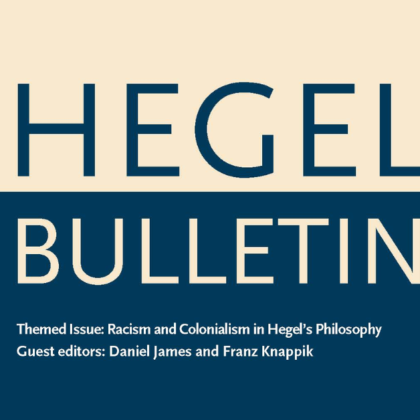Was Kant a mystic?
The great eighteenth-century German philosopher, Immanuel Kant (1724-1804), is known for his wide-ranging insights spanning the whole range of philosophical sub-disciplines, from epistemology and metaphysics to ethics and jurisprudence—and everything in between. Indeed, Kant’s influence on aesthetics, history, theology, and the sciences is undeniable. But does his philosophy’s influence extend even to those interested in mysticism and religious experience? If so, what is the nature of that influence? Is he a friend or foe of those who dabble in the mystical?
A book symposium published in the March 2021 issue (Volume 26 – Issue 1) of Kantian Review debates these provocative questions head on. Each of five critics contributed a thought-provoking response to my 2019 book, Kant and Mysticism: Critique as the Experience of Baring All in Reason’s Light, to which I replied with a defense of the book’s main theses. Chief among my controversial claims is that Kant’s attitude towards mysticism was not as straightforward as is often assumed, inasmuch as Kantian Critique can itself be regarded as a type of mystical experience. What I call “Critical mysticism” is an experience of totality, not through the discriminating lens of human understanding nor through the blunt receptors of sensibility, but through the reflective faculty that Kant called bare reason. Kant famously bans all knowledge of the three fundamental “ideas of reason” (God, freedom-in-the-world, and immortality-of-the-soul), yet upholds them as necessary beacons of light for anyone hoping to live a meaningful life in a world characterized by the ever-increasing fragmentation engendered by humanity’s relentless search for knowledge.
Kant himself harshly criticized and openly rejected mysticism. What he derided as Schwärmerei—a term I translate as “delirium”, replacing the potentially misleading translations, “fanaticism” or “enthusiasm”—is a disease-like, illusory way of experiencing the world that Kant consistently warned against, as the antithesis of a reason-governed life. His model mystic was Emanuel Swedenborg (1688-1772), whose work Kant studied in the early 1760s, before setting out on the path that led to the Critical philosophy. Kant was so disillusioned with what he saw as Swedenborg’s false promises that he wrote an entire book to expose the errors of such delirious mysticism: Dreams of a Spirit-Seer, Elucidated by Dreams of Metaphysics (1766) is widely regarded as the best proof that Kant could not be a mystic.
Arguing against the received view of Dreams, Kant and Mysticism demonstrates that Kant’s work on Swedenborg played a decisive role in his development of the Critical philosophy. As Kant’s title explicitly states, his study of Swedenborg highlights a direct parallel between metaphysics and mysticism: the sensation-dreams that Swedenborg put forward as a (false) path to mystical knowledge awakened Kant to the realization that he had himself been deluded by the understanding-dreams of rationalist metaphysics. Kant concludes Dreams with a call to undertake a thoroughgoing Critique of reason’s powers, so that a reliable way forward can be found. My basic claim in Kant and Mysticism is that if the Critical philosophy is Kant’s solution to the problem first identified in Dreams, then its solution conveys a twofold purpose: shedding reason’s light on the true path to genuine metaphysics will also illuminate the true path to authentic mysticism.
Each of the five esteemed critics who contributed to the Kantian Review symposium challenges various aspects of my arguments. Chris L. Firestone argues that my interpretation defends a hermeneutic “impossible possibility”, inasmuch as the thesis I impute to Kant could never be proved or disproved from the textual evidence. Swami Medhananda (Ayon Maharaj) agrees with my claim that Kant sought to make room for certain forms of mystical experience, but denies that Kant himself was a mystic and disputes my claim that many key Critical theories offer ways of nurturing mystical experience. While J. Colin McQuillan is open to the latter possibility, he denies that Kant’s Critical method was well-formed in the 1760s and rejects the claim that it arose, even in part, out of Kant’s reflections on Swedenborg. Although Eric S. Nelson is also sympathetic towards my portrayal of Critical mysticism as a new way of life, he shows that Kant had a poor understanding of various Asian philosophical and religious traditions, often regarded as mystical, and opines that Kant himself would regard his new approach more as a “Critical ethos” than as a new form of mysticism. Finally, Lawrence Pasternack assesses several of my main claims about Kant’s Critical mysticism by carefully examining Kant’s theory of “immediate experience”, reflecting on how Kant might allow certain religious experiences to supervene on ordinary experience, and assessing the extent to which Kant would regard conscience as God’s “voice”.
My response to the foregoing critical essays begins by reminding readers that the book never says that Kant viewed himself as a mystic, that it fully acknowledges Kant’s negative view of mysticism, that it attempts no overview of mystical traditions, and that its goal was to initiate a dialogue on Critical mysticism, not to have the final word. I then respond in detail to each of the many incisive criticisms raised by the critics, some of which simply misunderstood what I was arguing, while many others raised excellent points worthy of further consideration. Those who read the symposium will, I hope, be encouraged to read the book itself, but most importantly—whether or not Kant himself was a mystic—to consider the merits of Critical mysticism.
Read the articles in Kantian Review






